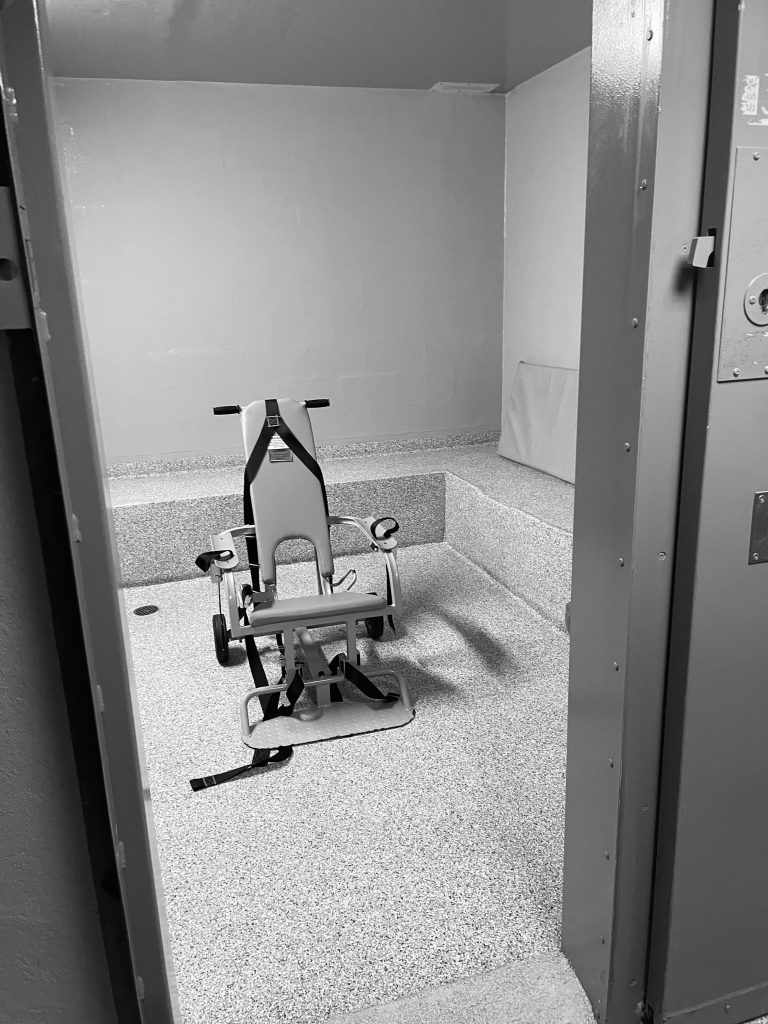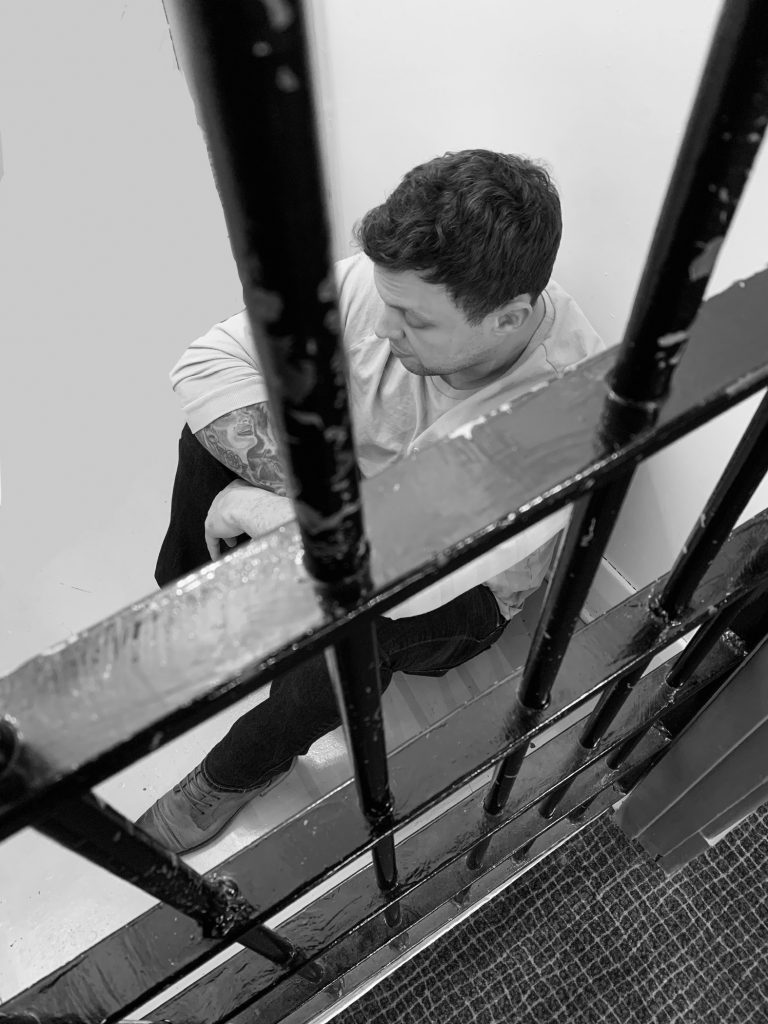Proposed solutions to Canada’s current failing and corrupt prison system

Keisha Christensen
Keisha Christensen is a student at Capilano University, graduating with an Interdisciplinary Studies degree. On top of being a student, she has worked at Pilates from the Center for 6 years, teaching clients, running the studio and being a part of their Teacher Training Program. She aspires to be an Elementary School Teacher in the near future, educating and inspiring our youth.
Nathan Fry is an inmate at Mission Institution in Mission, British Columbia. Day after day, he wakes up alone, in a 6 ft by 9 ft cell with a tiny window opening covered by a heavy mesh so that very little air can circulate. There is no colour, no décor, nothing to assist in bringing up his spirits. Sometimes he’s isolated in that cell for up to 22 hours of the day. When he’s finally let out of his cell, the environment that he enters into is filled with toxic masculinity, where vulnerability and compassion are seen as weakness. He’s constantly on edge and too scared to relax. Even worse, many of the professionals within this environment, who are meant to be his role model and keep him safe, hold their power over him. “They lie, steal and cheat and 99.9% of the time they get away with it” (Fry). Those that are supposed to be the “good guys” are in fact reinforcing how to be a “bad guy”. Every day in this environment he loses more of his self-worth, what left there is of it to lose, he loses his confidence and he loses himself. He isn’t treated as a human being with psychological needs, but rather a criminal with no chance to be seen as anything but a criminal. This is his reality. Imagine if that was your reality or the reality of one of your love ones. As someone who has struggled with their own mental health in the past, I couldn’t imagine how deeply depressed or anxious I would become in an environment described above. I was first made aware of the harsh realities of Canada’s failing prison system through a geography course taken at Capilano University. This is also when I first came into contact with Joanne Fry. She is the mother of Nathan Fry. She is also a powerful advocate for prison reform and has dedicated her life to fighting for those who have lost their voices to Canada’s prison system.

Photo given by Joanne Fry
This article is intended to educate the general public about the experiences of Canadian inmates, it’s impacts on inmate’s mental health and the importance of rehabilitation and reintegration for the overall betterment of society; as well as propose solutions to Canada’s broken prison system. So much is hidden from the general public regarding the realities about Canada’s prison system and the toxic environment of Canadian prisons. Made invisible, it is easy f0r the average person to look over how we, as Canadians, treat our incarcerated populations. It is shown that being incarcerated and placed in the prison environment tends to worsen mental health symptoms, which have important impacts on recidivism rates (Sahlin). Recidivism is defined as “a recurrence of criminal behavior” (Sahlin) and currently, 38% of Canadian federal inmates released into their communities re-offend and end up back in prison (Stewart, et al.). As Joanne Fry explains, “if you don’t enter prison with mental health issues, you can bet that you’ll be leaving prison with mental health issues”. It is then not surprising to find that 40% of federal inmates suffer from one or more mental health disorder. These include, but are not limited to, depression, anxiety, paranoid ideation, psychoticism and obsessive-compulsive disorder (Clark 244). With mental health issues continuously increasing in Canadian prisons, especially when you take into account the impacts of COVID, we as a society should be concerned, again if not for the inmate’s mental health, then for the safety of the general public, because it is shown that lack of mental health care significantly effects recidivism rates. However, Canada’s correctional system currently reinforces criminality and mental health disorders within inmate populations due to the current culture surrounding Canada’s prison system, the negative prison environment, lack of mental health professionals and lack of progressive programs that aid in rehabilitation. Therefore, improved living conditions, increased trained mental health professionals, changes in correctional staff mentality from retribution to recovery and the implementation of programs that support the reintegration and rehabilitation of inmates are essential in order to lower recidivism rates and halt the cycle of incarceration. This is critical due to the fact that almost all inmates will re-enter society at one point in time and they should be returning to their communities equipped with support, education, confidence and a healthy mental state, not just for the sake of the inmate but also for the safety of the general public.
Canada has a long correctional history, dating back to early settlement of Europeans on traditional Indigenous lands. At that time, criminals were punished for their crimes by physical pain such as branding or whipping. The ‘penitentiary’ was established as an alternative to these cruel, often public, forms of punishment and by 1835 Canada’s first penitentiary was built and operational. Criminals were sent to penitentiaries in order to be segregated and to reflect on their crimes with the goal of “putting them back on the straight and narrow” (“History of the Canadian Correctional System” 2). In the 1950’s and 1960’s progressive progress was made in regards to Canada’s correctional institutions. Investigations into Canada’s penal system were conducted and recommendations were made in respect to reintegration and rehabilitation of inmates. The Canadian government instituted the Fauteux Commission which recommended a new type of correctional institution, one that didn’t just segregate its inmates but rather offered programs that were meant to change behaviours, attitudes and habits of inmate populations. (“History of the Canadian Correctional System”). Therefore, individuals would be sent to prison as punishment not for punishment with opportunities to better themselves, yet the current experiences of Canadian inmates are still that of punitive measures, i.e., segregated, rather than rehabilitation which essentially promotes criminal behaviour and increases mental health issues.

The problems stem around the ingrained culture of indifference and the ’us versus them’ mentality of correctional officers, the toxic environment created within prison walls, the lack of mental health professionals and the lack of progressive programs that aid in rehabilitation and reintegration of our incarcerated populations. The culture of indifference, or in other words the culture of lacking empathy and compassion, has become increasingly apparent within society. As Fry explains “we’ve become desensitized to suffering, we walk over the homeless man on the street”. As well, Robert Clark, in his book Down Inside, points to the culture of collective indifference, regarding both inmates and the higher goals of Correctional Service Canada (CSC), as being largely responsible for the issues that occur inside Canadian prisons. Clark also argues that this indifference unofficially permits the abuse and neglect of inmates. On top of this culture of indifference, a large part of the CSC culture is focused around the “us versus them” mentality, the “blue wall”. The “blue wall” is described as an “overdeveloped sense of solidarity, a level of cohesiveness that transcends one’s personal values. The unspoken rule is never rat on a fellow officer, no matter what” (Clark 17). Joanne went on to described a situation with Nathan that demonstrated this unspoken rule, “one morning, Nathan was let out of his cage by a small, female correctional officer, then all of the sudden a bunch of CSC officers came rushing into his unit and accused him of passing keys and letting himself out. That is a big no-no and if it were true, he’d be sent to Kent, our maximum prison, in 5 minutes. Nathan said “no, no, she just let me out”, looking towards the female officer to confirm his innocence but she said nothing. She just stood there, looking like she was going to throw up, but said nothing”. This is just one explain of the many instances that show the strength of the “blue wall” in our prisons. Joanne goes on to explain that, “the ones who are supposed to be the ‘good guys’ are in fact reinforcing how to be a ‘bad guy’, their incompetence, corruption and deceit is absolutely guaranteeing future victims”. How can this be? Joanne has pointed to The Stanford Prison Experiment as a possible explanation to this deeply ingrained culture Canadian prisons possess. The Stanford Prison Experiment was an experiment conducted by Stanford University in order to study the situational variables on participants behaviours and reactions in a simulation of a prison environment. Male university students freely signed up for the experiment and as part were deemed either a ‘guard’ or a ‘prisoner’. What made this experiment significantly important was the increasingly brutal psychological abuse by the ‘guards’ towards the ‘prisoners’. This psychological abuse occurred within such a short period of time that the experiment was shut down within six days (“Stanford prison experiment”). As unethical as this experiment was, it does a fantastic job in showing the impacts of what can happen when individuals perceive this power of authority over others. This power of authority is seen within our prisons as well.

Additionally, the less than poor living conditions that inmates are subjected to makes this situation even worse. Not only are our Canadian prisons old and outdated, the infrastructure is falling apart and the technology used to run the prisons are archaic (Ling, House of hate). These institutions have been designed to lack stimulus and lack autonomy with their poor conditions, overcrowding, lack of access to nature, inadequate lighting, and noise. All which can have impacts on the occurrence of violence, mental and physical health and recidivism (“Physical environment in prisons”). Even worse is the increasing occurrence of lockdowns (Ling, Canada’s prisons are failing). Isolation has become the solution to many problems inside our prisons. The COVID-19 pandemic has worsened this issue, where inmates who showed symptoms of the virus were locked in old solitary confinement cells, instructed to self-isolate and sometimes not let out of their cells for weeks (Fry). Other inmates during the pandemic were only let out for 20 minutes a day, one by one. It was in these 20 minutes that inmates had to decide which was more important to them, to make a call to a loved one, to shower, to breathe some fresh air or to do their laundry (Ling, House of hate). Now, not only are inmates isolated from their families and their communities but also each other, they are isolated from any meaningful human connection, left to be alone with their unhealthy thoughts and anger towards the situation they find themselves in. Unfortunately, these hugely restrictive and segregated measures influenced a massive amount of self-harming and suicide attempts within Canadian prisons (Fry). At Mission Institution, Joanne mentioned an inmate who had been ‘cutting’ and how the staff had just laughed about it and did not refer him to healthcare. Coupled with the poor living conditions is the pitiful food inmates are given to eat. Today, inmates are living off “centralized food” which means that their meals are prepared somewhere off site, frozen and then sent to the prison where they are reheated and served to prisoners. These meals fail to meet the fundamental Canada Food Guide requirements, they fail to respect any dietary restrictions, they are prepared in unhygienic conditions and are hardly enough food to keep a man alive (Ling, House of hate). Joanne spoke about the inadequate food in Mission Institution, explaining that she “wouldn’t feed that food to my dogs, let alone another human being”. The food inmates receive is so repulsive that one inmate at Mission Institution went as far as stitching his lips together just so they couldn’t force him to eat it. The culture of indifference towards inmates by correctional staff is also evident in this example because “apparently it was the laugh of the week” (Fry) and he was left stitched together until another inmate helped him cut the stitches out (Fry). All of these factors accumulated together has created such a toxic prison environment that there is no room for improvement and no chance for rehabilitation. These men, these inmates, are living everyday just to keep one foot in front of the other in order to simply survive. No wonder their mental health deteriorates within these walls.
Nevertheless, the problems within these walls thicken due to the lack of mental health professionals and lack of progressive programs that aid in rehabilitation and reintegration. CSC, in their Mental Health Strategy, have stated themselves that “mental health care should be consistent with community standards” (9) and that “meaningful use of time, including participation in programs for individuals with mental health problems and/or menta illnesses, is critical to their becoming contributing and productive members of the community” (10). Yet, this is not the realities of mental health care given. As explained by Fry,
“As far as CSC is concerned part of their convenient excuse for the moment is they’re unable to attached or retain psychologists and the psychologist that is there, he still will tell you himself ‘we are entirely ill-equipped, ill-prepared to do anything’. Their health care system just bleeds money in all direction but the vast majority of the CSC federal budget, 75% of it goes to staffing. So, there is very little money directed at the specific issue in order to solve a problem, that’s just not where their heads at. So, when you get to health care, which is entirely sub-standard, they are going to try and give you medication. They pick out of a pile and there you go, there’s nothing like you and I would have in the real world. If you were taking medication and experiencing all the various side effects, it’s not like here where you would go back and modify your medication, that’s not what happens there. Also, they will refer you to what’s called ‘brochures’, little scrap garbage papers saying “this is how you should deal with your anxiety, mental health, insomnia, your rage” and again for anyone who’s familiar with that, that goes nowhere.”

If you are so lucky to have a meeting with the psychologist, everything you say is nonconfidential and goes into your correctional plan. This can have major impacts on an inmate’s future and for this reason inmates don’t disclose much information (Fry). As someone who has sought out to speak with a psychologist, it was important to know that what I said couldn’t be held against me in order to get to the root of the problem. This isn’t happening in Canadian prisons and the problems are still very much a part of inmate’s lives. As much as mental health professionals are lacking from Canadian prisons, progressive programs are lacking even more. This is significant because studies have shown that progressive programs, such as garden programs, have been proven to not only foster rehabilitation and restoration but also improve inmate’s mental health (Timler, et al.). In CSC’s Mental Health Strategy, they acknowledge the importance of these progressive programs, yet the truth of the matter is that they continuously shut down or dismiss opportunities for these programs to exist. Joanne mentioned a situation where this occurred at Mission Institution. She spoke about the Garden Program they used to have and how they “were just such a massive, massive success”. Joanne explained these programs as “win-win” situations. A win for the institution because the behaviours of the participants/inmates improved dramatically since it was their behaviour that determined whether they could participate. But also, a win for the inmates because they now had a purpose, these programs would become their lives, it’s all they would talk about. They felt productive and gained confidence. Also, knowing that the food they were growing was going to mothers and children in need in the community gave them even more purpose (Joanne). Unfortunately, Mission’s Garden Program was shut down and never brought back. This is just one example, of the many, where rehabilitative programs are deemed unimportant in the eyes of the CSC. With the lack of necessary skills, education, self-esteem and confidence, inmates released into their communities have a higher chance to reoffend and end up back in prison. With all of this, it is no wonder that recidivism rates in Canada are so high.
So where do we go from here? Solutions to Canada’s faulty prison system can be found when examining the unique approach of Scandinavian country’s prison systems. Countries such as Norway, Finland, Sweden and Denmark have demonstrated that prison systems that place importance on rehabilitation, normalization, dynamic-security and reintegration lowers inmate recidivism rates and stops the cycle of incarceration. “The Scandinavian countries have very low recidivism rates compared to Western countries. Norway has one of the lowest recidivism rates in the world at about 20 percent” (Denny). The use of normalization and educational programs as part of the rehabilitative process have been suggested as key components to the low recidivism rates in Scandinavian countries. Normalization relates to the guidelines and programs in prisons that permits prison life to look and feel like life in the outside world. This concept of normalization allows inmates to have positive rehabilitative experiences as well as maintains their connections to their communities, making it much easier to reintegrate after release. (Denny). For example, inmates within Finland’s “open” prisons are able to leave the premises of the prison in order to go to work or study in the community. “With electronic monitoring, prisoners are allowed to spend time with their families in Helsinki” (Larson). Their cellblocks have the appearance of university dorm rooms that contain flat screen TV’s, sound systems and mini refrigerators, for those inmates who can afford them. Guards and prisoners cook and eat together in a communal BBQ pit and dining hall (Larson). These “open” prisons allow for communal living, rather than living in isolation. They increase inmate’s autonomy, as well as their support networks, by keeping them connected to their community and family, which can be critical to inmate’s mental health and therefore recidivism rates. Another example can be seen when examining Denmark’s prison, Storstrøm. It has used architecture to support the mental and physical well-being of their inmates in order to promote inmate’s social rehabilitation. “The prison buildings are located to form a small urban community, with streets, squares and centrally located community buildings. From the various urban rooms and cells there are views of the surrounding green landscape” (Møller). Not only does this type of prison design promote the concept of normalization, it also incorporates green spaces and exposure to nature which have been shown to improve mental health, reduce stress, increase well-being, decrease violence and crime as well as foster greater altruistic behaviours (Soderlund and Newman).

Another component to the Scandinavian prison system is the role of their staff and the implementation of “dynamic security” practices. Guards in Scandinavian prisons occupy the role of both rehabilitation and security (Larson). This allows for a shift in correctional staff mentality from retribution to recovery by promoting positive relationships, interactions and communications between guards and inmates (“Handbook on Dynamic Security and Prison Intelligence”). Guards cook with inmates, play cards with them and treat them as human beings with psychological needs, rather than criminals who are in prison to be punished for their crimes. There is no need for a “blue wall” because the “us versus them” mentality simply doesn’t exist. Employing ‘dynamic-security’ would also allow more time for the trained psychologist to attend to those with critical mental illnesses, as they provide the inmates with a safe space to talk about their mental health without it being used against them. Additionally, progressive rehabilitative programs are essential to aid in the rehabilitative and reintegration process of inmates. These programs, such as garden programs and dog-therapy programs, not only provides inmates with meaningful work but also have shown to foster important skills and prosocial behaviours, which are needed in order to reintegrate back into society. Research has also shown that these programs improved coping abilities, improved inmates and correctional staff relationships, reduced symptoms of stress, depression and anxiety, as well as increased inmate’s self-esteem and confidence (Timler, et al.). Educational programs, such as post-secondary education, is also critical for reintegration. In Norway, for example, they have an “import model” which allows outsiders to come into the prison and teach inmates. This not only supports inmates towards better, more successful futures for themselves, but also maintains community connections. For many inmates who didn’t get the opportunities to get an education, this is invaluable. These programs have been proven to have positive impacts on the rates of recidivism (Denny). Imagine what these meaningful interactions, healthy environment, increased autonomy and progressive programs could do to Canadian inmate’s mental health and recidivism rates.
It is clear that radical change is needed in regards to Canada’s correctional system. However, if radical change is not possible, evolutionary change should constantly be in the fore front of the government, policy makers and CSC in order to truly serve all Canadians and create safer communities throughout the country. By looking at other nations, such as the Scandinavian countries, Canada can learn what works, in regards to lowering recidivism rates, and move towards implementing progressive change to our current, faulty system. Aa a Norwegian prison officer explains “… we are releasing your neighbour,” he continues. “If we treat inmates like animals in prison, then we will release animals on to your street” (“How Norway turns criminals into good neighbours”). Rather than truly assisting inmates in the betterment of themselves and reintegration, current Canadian prisons with their toxic environments, lack of progressive support and lack of rehabilitative programs continues the horrific cycle of incarceration. A cycle that, in a country like Canada, should not exist. If you are someone who finds it difficult to care or have empathy regarding the treatment of Canada’s incarcerated individuals, do it not for the sake of the inmates but for your safety, the safety of your friends and family and the safety of Canadian society as a whole.
Works Cited
Akhtar, Madeeha. “The Swedish Prison System.” The Horizon Sun, 18 Dec. 2020, thehorizonsun.com/features/2020/12/18/the-swedish-prison-system/. Accessed 3 Mar. 2022.
Clark, Robert. Down inside: Thirty Years in Canada’s Prison Service. Goose Lane Editions, 2017.
Denny, Meagan. “Norway’s Prison System: Investigating Recidivism and Reintegration.” Bridges: A Journal of Student Research, vol. 10, no. 10, 2016, pp. 21-37, digitalcommons.coastal.edu/bridges/vol10/iss10/2/.
Fry, Joanne. Interview. By Keisha Christensen. 25 Feb. 2022.
“Handbook on Dynamic Security and Prison Intelligence.” United Nations Office on Drug and Crime, 2015, www.unodc.org/documents/justice-and-prison-reform/UNODC_Handbook_on_Dynamic_Security_and_Prison_Intelligence.pdf. Accessed 5 Mar. 2022.
“History of the Canadian Correctional System.” Correctional Service Canada, www.csc-scc.gc.ca/educational-resources/092/ha-student-etudiant-eng.pdf. Accessed 5 Mar. 2022.
Larson, Doran. “Why Scandinavian Prisons Are Superior.” The Atlantic, 24 Sept. 2013, www.theatlantic.com/international/archive/2013/09/why-scandinavian-prisons-are-superior/279949/. Accessed 28 Feb. 2022.
Ling, Justin. “Canada’s prisons are failing.” CBA National, The Canadian Bar Association, 12 Aug. 2019, https://www.nationalmagazine.ca/en-ca/articles/law/in-depth/2019/canada-s-prisons-are-failing. Accessed 3 Mar 2022.
—. “Houses of hate: How Canada’s prison system is broken.” Maclean’s, 28 Feb. 2021, www.macleans.ca/news/canada/houses-of-hate-how-canadas-prison-system-is-broken/. Accessed 3 Mar. 2022.
Møller, C F. “Storstrøm Prison: a Modern, Human, High-security Prison that Uses Architecture to Promote Prisoners’ Social Rehabilitation.” urbanNext, 2017, urbannext.net/storstrom-prison/. Accessed 3 Mar. 2022.
“Physical environment in prisons.” The John Howard Society of Canada, 2 June 2019, johnhoward.ca/blog/prison-physical-environment-research/. Accessed 27 Feb. 2022.
Sahlin, Jo. “The Prison Problem: Recidivism Rates and Mental Health.” Good Therapy, 20 May 2018, www.goodtherapy.org/blog/prison-problem-recidivism-rates-mental-health-0520187. Accessed 28 Feb 2022.
Soderlund, Jana, and Peter Newman. “Improving Mental Health in Prisons through Biophilic Design.” Prison Journal, vol. 97, no. 6, Dec. 2017, pp. 750–72. EBSCOhost, https://search-ebscohost-com.ezproxy.capilanou.ca/login.aspx?direct=true&AuthType=ip,uid&db=edshol&AN=edshol.hein.journals.prsjrnl97.43&site=eds-live&scope=site
“Stanford prison experiment.” Wikipedia, The Free Encyclopedia. Wikipedia, The Free Encyclopedia, 20 Mar. 2022, 7:34 pm, https://en.wikipedia.org/wiki/Stanford_prison_experiment. Accessed 14 Mar 2022.
Stewart, Lynn A., et al. “A Comprehensive Study of Recidivism Rates among Canadian Federal Offenders.” Correctional Service Canada, Aug. 2019, www.csc-scc.gc.ca/research/005008-r426-en.shtml. Accessed 4 Mar. 2022.
Timler, Kelsey, et al. “Growing Connection beyond Prison Walls: How a Prison Garden Fosters Rehabilitation and Healing for Incarcerated Men.” Journal of Offender Rehabilitation, vol. 58, no. 5, July 2019, pp. 444–63. EBSCOhost, doi-org.ezproxy.capilanou.ca/10.1080/10509674.2019.1615598
